Using a grow light can be an excellent option for people without access to an outdoor garden. You can still get all of the benefits of growing vegetables and other crops. However, you need to consider how long to leave grow lights on for the best chance at growth.
Most plants require grow lights to be on 12 – 18 hours per day. However, the duration varies greatly, depending on whether the plant is shade tolerant, and grow light factors (light intensity, light quality, distance from plant). Low-intensity grow lights may need to be on up to 22 hours/day.
Whether you’re new to gardening or have always had a garden, using a grow light can sound daunting. But it can be an amazing tool, and you can grow a garden just as well inside. Read on to learn more about growing light schedules.
How Long Should You Leave Grow Lights On?
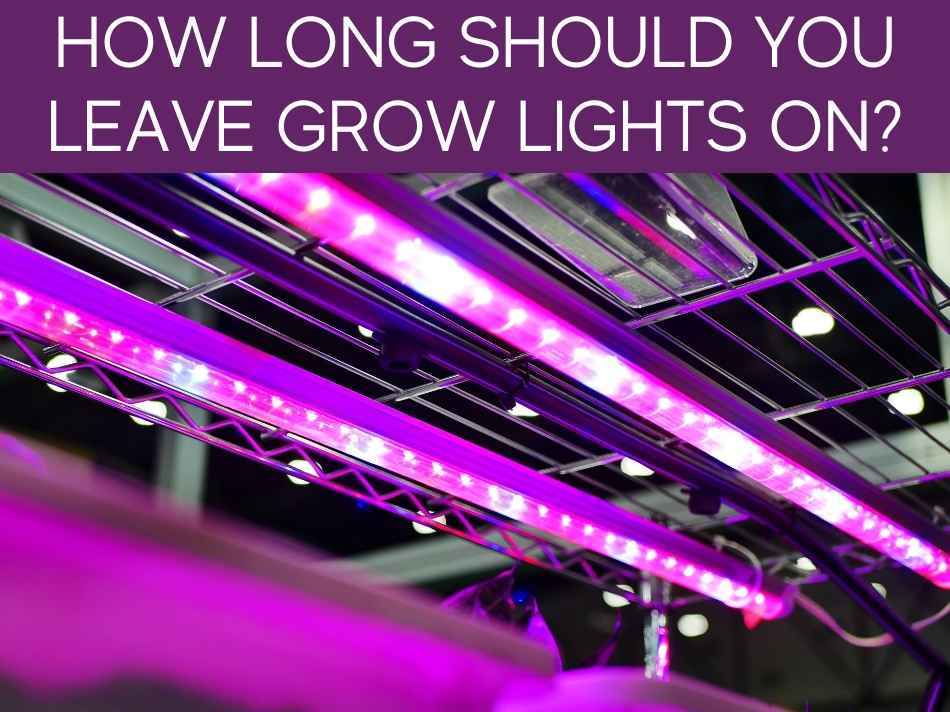
No matter what you decide to plant, you should consider how long to leave a plant light on.
Most plants need a grow light on for at least half of the day, so about 12 – 14 hours.
However, some plants need more than that, and the light intensity and light quality vary greatly between grow lights.
Low- and medium-intensity grow lights should be left on longer (18-22 hours), while high-intensity grow lights might only require 10-14 hours per day.
A few things can determine how long you should leave a grow light on.
First, you have to think about how much light that plant needs.
Spinach and other leafy greens don’t need as much light as flowering plants, for example.
Another thing to consider is surrounding light sources.
Whether you have a large artificial light or a nearby window, that can reduce how long you need to use the grow light each day.
You should also think about how old the plant is. Seedlings need a lot more light than fully-grown plants.
Consider how the two compare.
How many hours of light do seedlings need?
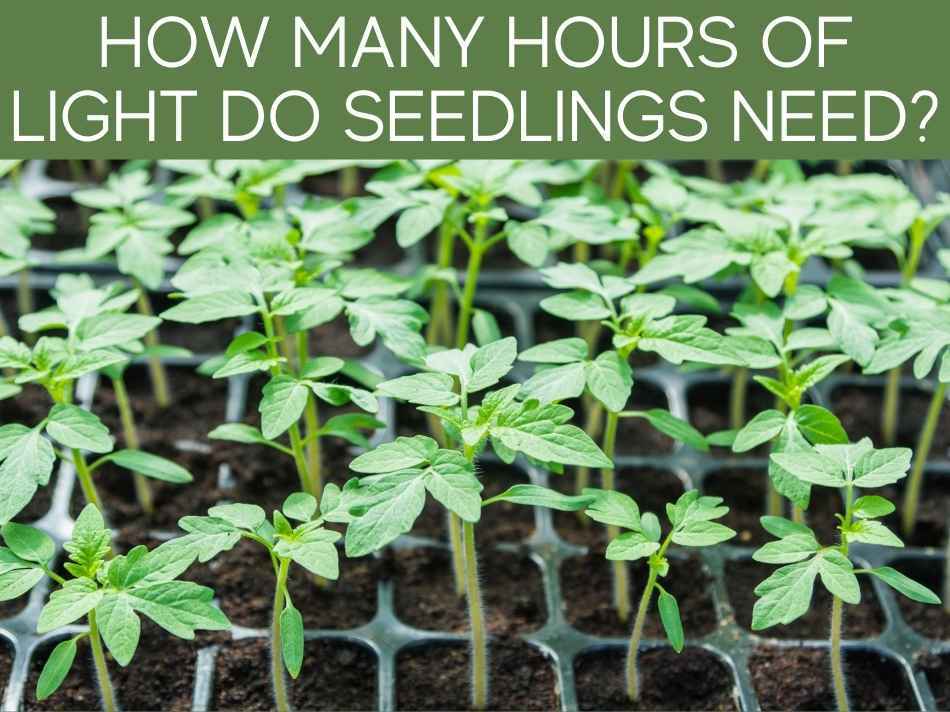
Although it depends on the type of plant, most seedlings require 14-18 hours of light for growth.
That’s different from starting seeds, since most–but not all–seeds don’t need light to germinate.
A few common plant seeds that require light to germinate are Begonia, Primula, Coleus,
That said, seedlings generally require 16 hours of light for proper growth.
However, the actual light requirement will vary greatly depending on:
- Whether the plant is shade tolerant
- The intensity of the light
- The quality (i.e., colors & wavelengths) of the light
How Long Should Grow Lights Be On for Seedlings?
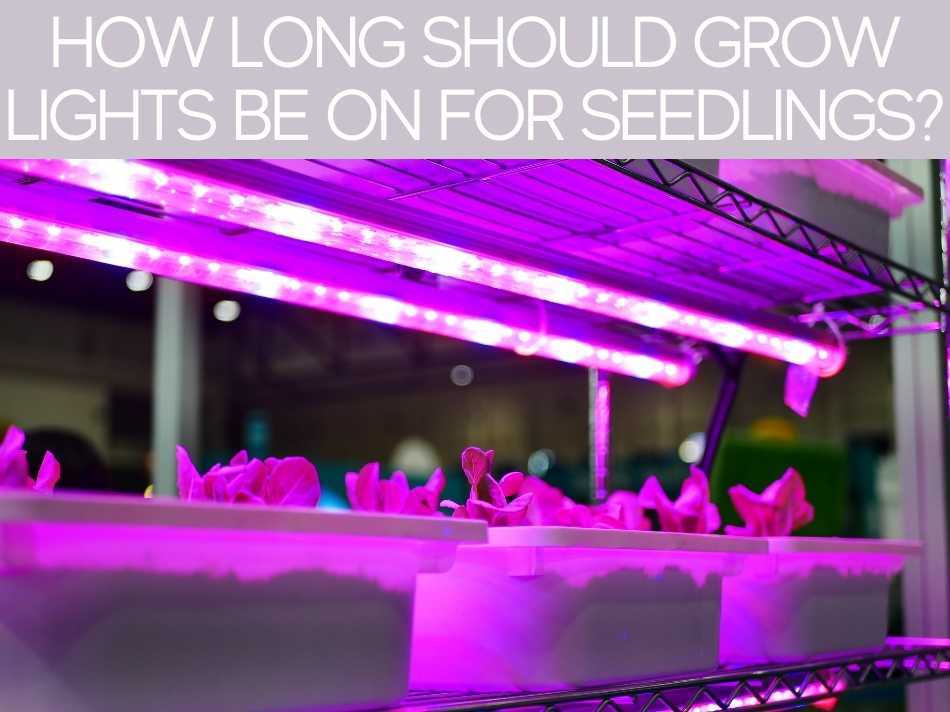
When you first get seedlings, you should know how many hours of light do seedlings need?
In general, seedlings need more light than when the plants fully grow–unless you’re growing vegetables that produce fruit.
Seedlings need the extra light to help grow, and it’s essential they get that light now.
If they don’t, the plants may not grow as big.
The foliage may also turn yellow or pale, and the plant won’t be as healthy.
A common symptom of insufficient light is that plant stems get long and plants look “leggy”.
The longer stems are the plant’s attempt to reach toward the light to increase the amount of light it receives.
In general, you’ll want to ensure that your seedlings get at least 16 to 18 hours a day of light, or even 20-22 hours per day if you have a low- or medium-intensity grow light.
The 16 – 18 hours of grow light per day is a general guideline.
How long grow lights should be on for seedlings will vary greatly, depending primarily on:
- The intensity of light produced
- The quality (i.e., color & wavelengths) of light
- The light requirements for the plant variety (i.e., low-light plants require less light than full-sun plant varieties)
Note that the exact same grow light can be moved closer to plants to increase the light intensity.
How Long Should Grow Lights Be On for Older Plants?
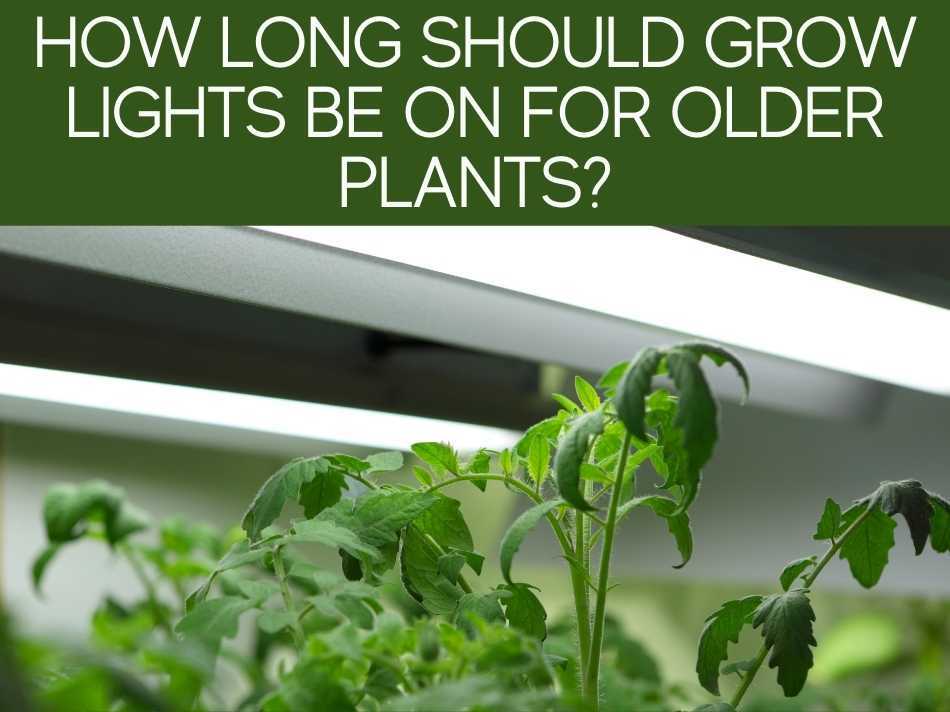
Once your plants reach their full size, you don’t need to use the grow light as much.
After all, they have stopped growing, which is what a grow light helps.
However, you shouldn’t ditch the grow light entirely.
Fully-grown plants still need about 12 to 14 hours of light per day.
If your plants are near a window, you may be able to get away with a bit less.
The same is true if you turn on an overhead artificial light for much of the day.
Grow Light Schedule for Vegetables
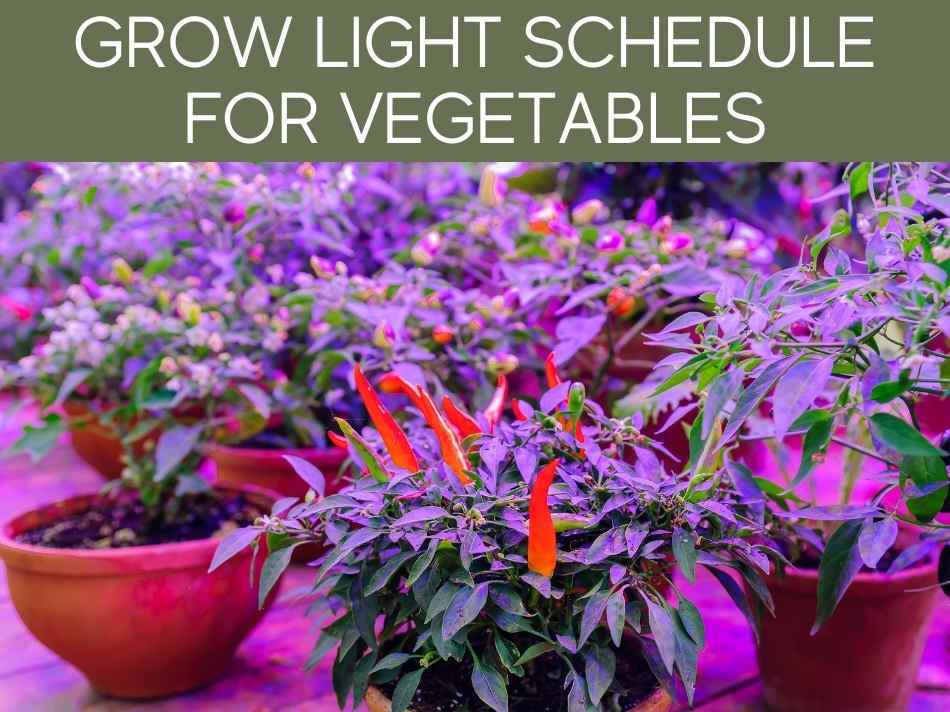
A grow light schedule for vegetables and other plants are essential.
That way, you don’t forget to turn the LED light on each day.
At first, you may need to set the alarm to remind yourself.
But eventually, it will become part of your routine to turn the light on and off.
As you set, you are to grow a light schedule, consider a few factors that can alter it.
You can test out a few light schedules to find what works, but here are a few ideas to help you start.
Grow light hours per day for vegetables
Depending on the plant or plants, you should set a schedule that you can stick to.
For example, if you need to use the light for 16 hours and sleep for 8 hours, you can turn the light on when you wake up and off when you go to bed.
If you need less light than that, you can set a schedule to match up with when you leave for work or when you return.
Either way, keep the hours and schedule as consistent as you can so that your plants can grow well.
When to use grow lights for vegetables
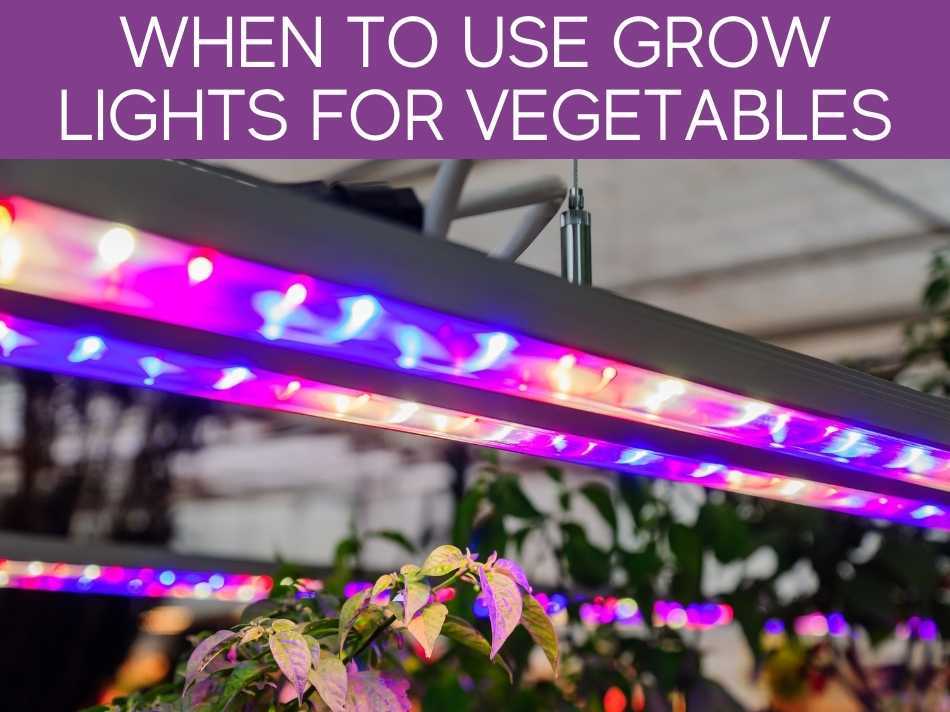
If you can, turn the grow light on for most of the day rather than at night.
That way, the grow light can mimic the effects of the sun, and your plants can grow like they would if they were outdoors.
While you can use the grow light overnight, any natural or artificial light could interfere during the day.
So unless you have a dark room with no windows that you don’t use, you should time your grow light with the natural light.
How long to leave plant light on
Go back to the initial step of figuring out how long you should leave grow lights on.
Consider everything from your plants to their age.
Then, determine what time you plan to turn the light on each day.
For most types of plants, 12 to 18 hours of light per day is sufficient to allow proper growth, and even flowering, as well as setting fruit.
However if your plants get some sunlight–from a window, for example–you could turn off the grow light while the plants receive natural sunlight.
Vegetables that produce fruit–like tomatoes, cucumbers, or strawberries–require more like 16-18 hours of light to produce mature fruit.
To learn more, we’ve got an entire article about growing vegetables with grow lights.
Grow light intensity, color (i.e., wavelengths of light), and duration should mimic the amount of natural sunlight the plants would typically receive if they were growing outdoors in summer.
Add up the hours, and you can get the time when you need to turn the light off.
The hours don’t necessarily have to be exact.
However, you should get as close as possible to the ideal schedule when your plants are growing.
What Can Affect the Grow Light Schedule
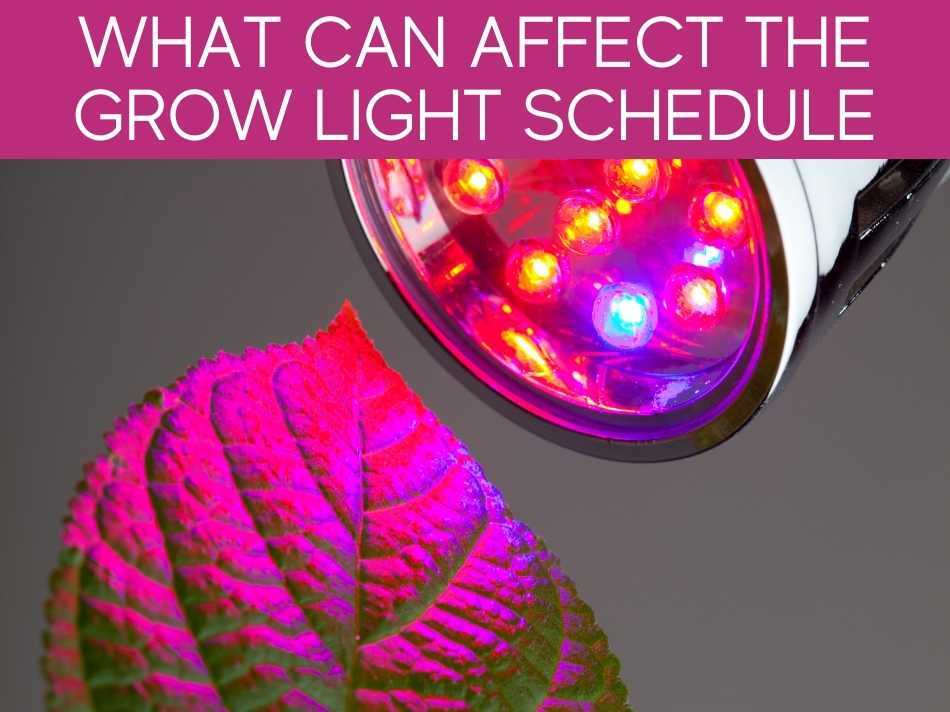
The next thing you should consider is what can affect or warrant changes to your grow light schedule.
If possible, try to keep the environment as similar as possible when growing plants.
That way, you can learn how that setup works well.
Here are a few factors to consider when setting or adjusting your grow light schedule:
- Light intensity
- Distance from light source (i.e., a plant that’s farther from a light source receives less intense light)
- Light quality (i.e., colors / wavelengths of light)
- Light duration
Light Intensity
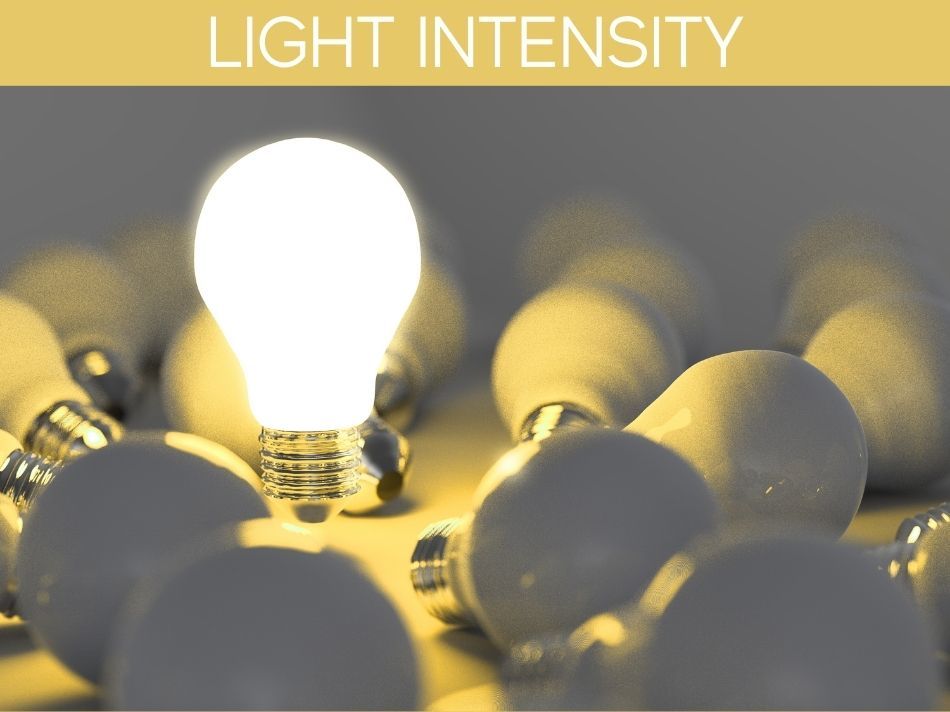
First, you should think about how bright the light is.
You can choose between low, medium, and high intensity grow lights.
A higher intensity light won’t need to be on as much as a low or medium one to achieve the same results.
However, some plants need high intensity no matter what.
Other plants can’t handle that much light and need something dimmer.
So consider what plants you have to help find the best light intensity.
Light Color
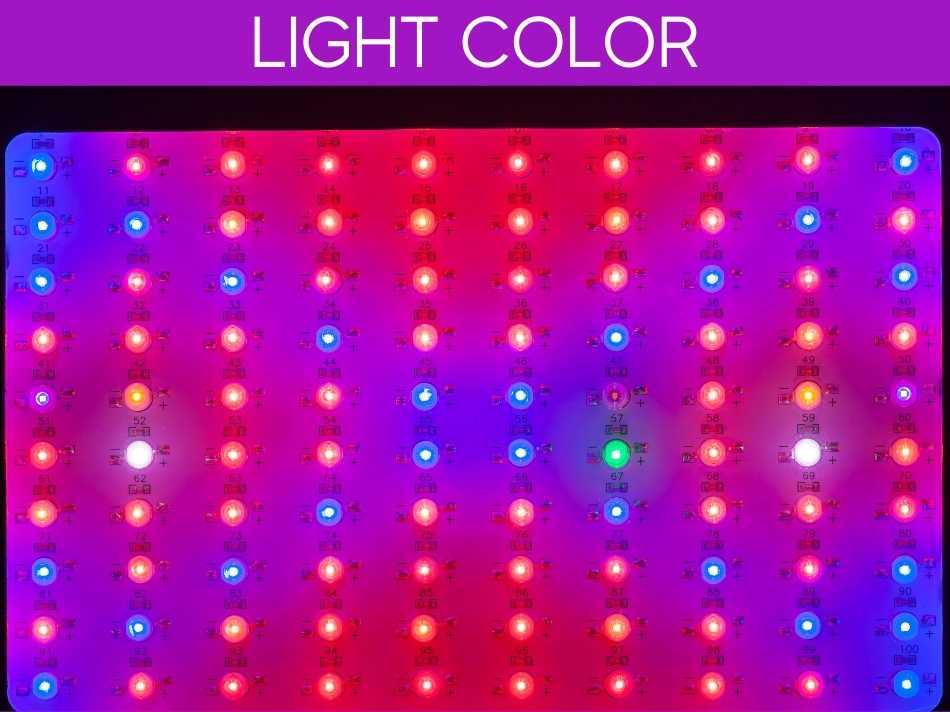
You should also consider what color your grow light is.
White grow lights are excellent for almost any plant, so you don’t have to find a different light.
If you have a seedling, you should use a blue or mixed light because they can help with growth.
But once your plant gets big, you can switch to a red light.
Red grow lights can help keep plants from getting too tall, which is useful indoors.
They can also help flowering plants develop buds so that they can produce flowers.
There’s a lot more to learn about light color & quality for plant growth.
Fortunately, we’ve got you covered, with our full article all about how the color of light affects plant growth.
Light Distance
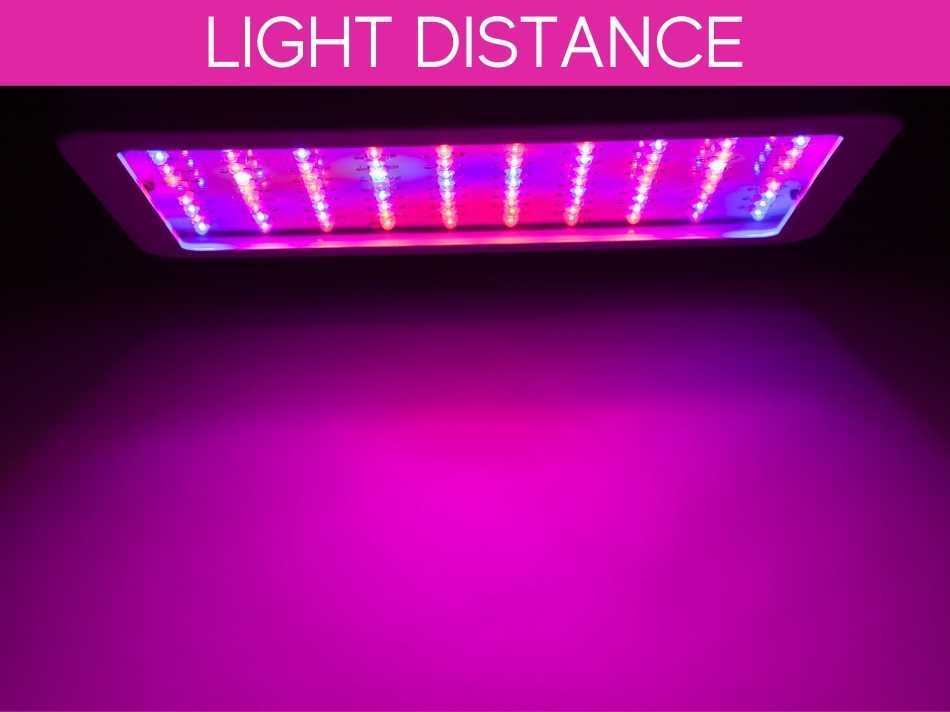
You may also want to adjust your grow light schedule and change the light position.
Seedlings need the light to be about four to six inches away.
So you’ll need to move the light up as the plants get taller so that they don’t hit the light.
Lettuce, herbs, and flowering house plants need about 6 to 12 inches (15.24 to 30.48 cm) between them and grow light.
And foliage houseplants need 12 to 24 inches (30.48 to 60.96 cm) of space.
Once your plants get big, you’ll need to adjust the position of the light, and you may need to reduce the light hours.
For more complete info you can read our full article on how far away should LED lights be from plants.
Plant Type and Age
The last thing to consider is what type of plant you have and how old it is.
As mentioned, seedlings need more light than when they’re fully grown.
If you aren’t sure how much light your plants need, talk to a local gardening expert.
That way, you don’t harm the plants with too much or too little light.
Final Thoughts
You should leave grow lights on for 12 to 18 hours a day.
The exact schedule depends on a lot of factors.
Be sure to consider all of them when setting a grow schedule for vegetables and other plants.

